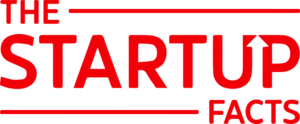
Established in December 1998 by Max Levchin, Peter Thiel, and Luke Nosek, PayPal was originally known as Confinity, focusing on security software for handheld devices. The founders recognized the growing need for encryption in mobile computing, a rapidly expanding industry at the time. However, their vision quickly shifted as they identified a much larger opportunity in digital payments.
From Security Software to Digital Payments
Confinity’s pivot to online transactions was driven by the increasing demand for secure and seamless digital payments. While e-commerce was gaining momentum, businesses lacked a simple, reliable way to handle online transactions, which slowed growth. In response, Confinity developed a digital wallet that enabled users to store and transfer money electronically. This strategic shift positioned the company as a key player in the evolving digital economy.
The Dot-Com Boom and PayPal’s Rise
Launched during the Dot-Com Boom, PayPal benefited from an era of rapid technological advancements and soaring investor enthusiasm for internet-based businesses. The internet was revolutionizing industries, and companies were racing to acquire users and capture market share. Businesses with “.com” in their name experienced unprecedented stock price surges, often with little focus on long-term sustainability.
However, this bubble eventually burst. Many companies collapsed, while those with solid business models and revenue-generating strategies endured the crash. Though PayPal wasn’t publicly traded at the height of the bubble, it entered the market at a time when the industry had matured. Surviving e-commerce businesses needed a reliable digital payment system—PayPal emerged as the perfect solution.
Merger with X.com and Strategic Realignment
In March 2000, Confinity merged with X.com, an online banking platform founded by Elon Musk. X.com aimed to revolutionize banking by offering financial services such as online payments and money transfers. The merger combined Confinity’s advanced payment technology with X.com’s broader financial services, strengthening their market position.
Initially, the company retained the X.com name, but internal disagreements led to Musk stepping down as CEO later that year. By 2001, the company decided to focus exclusively on digital payments, rebranding itself as PayPal. This shift aligned with the surging demand for secure e-commerce transactions, allowing PayPal to streamline its services and enhance its market presence.
Rapid Growth and IPO
Under Peter Thiel’s leadership, PayPal experienced rapid expansion. Despite the dot-com crash, the need for convenient online payment solutions remained strong. In 2001, PayPal went public with a valuation of approximately $800 million, marking a major milestone in its journey.
Acquisition by eBay and Continued Growth
In 2002, eBay acquired PayPal for approximately $1.5 billion in stock, transforming the digital payment landscape. At the time, eBay’s in-house payment solutions—Billpoint and eBay Payments—struggled to gain traction. PayPal’s security, ease of use, and growing popularity made it the ideal payment partner.
Despite the acquisition, PayPal retained operational independence under eBay, allowing it to innovate and expand. Over the years, PayPal introduced new services, including mobile payments, maintaining its leadership in the digital payments industry.
For over a decade, eBay and PayPal enjoyed a mutually beneficial relationship. eBay provided PayPal with a vast user base, while PayPal streamlined eBay’s transactions. However, as both companies evolved, their strategic priorities diverged.
Becoming an Independent Entity
In 2015, eBay and PayPal separated, with PayPal becoming an independent, publicly traded company. The split allowed eBay to focus on its marketplace while enabling PayPal to expand beyond eBay, forging partnerships and advancing its financial technology services.
The PayPal Mafia: The Founders’ Journeys Post-PayPal
The entrepreneurs behind PayPal didn’t stop innovating after their departure. Many went on to shape the tech industry in significant ways.
Max Levchin
After leaving PayPal in 2002, Levchin founded Slide, a media-sharing service that Google acquired in 2010. He later established HVF (Hard, Valuable, Fun) and launched Affirm, a fintech company providing flexible payment solutions, which went public in 2021.
Peter Thiel
Thiel co-founded Palantir Technologies in 2004, a data analytics firm widely used by government agencies and private enterprises. His venture capital firm, Founders Fund, has invested in high-profile companies like SpaceX, Airbnb, and Facebook. Thiel was also an early investor in Facebook, securing a 10.2% stake for $500,000 in 2004, which grew significantly in value.
Luke Nosek
Nosek co-founded Founders Fund with Thiel and later launched Gigafund, focusing on space exploration investments. Gigafund has played a key role in financing SpaceX’s ambitious projects.
Elon Musk
Perhaps the most well-known of PayPal’s alumni, Musk used his PayPal earnings to fund ventures like SpaceX (founded in 2002) and Tesla (where he became chairman in 2004). His contributions to electric vehicles, space travel, and AI have made him one of the most influential entrepreneurs of the modern era.
Conclusion
From its early days as Confinity to its dominance as a digital payment leader, PayPal’s journey has been marked by strategic pivots, innovative solutions, and influential leadership. The company continues to evolve, shaping the future of online transactions while its founders leave lasting impacts on the tech industry.










